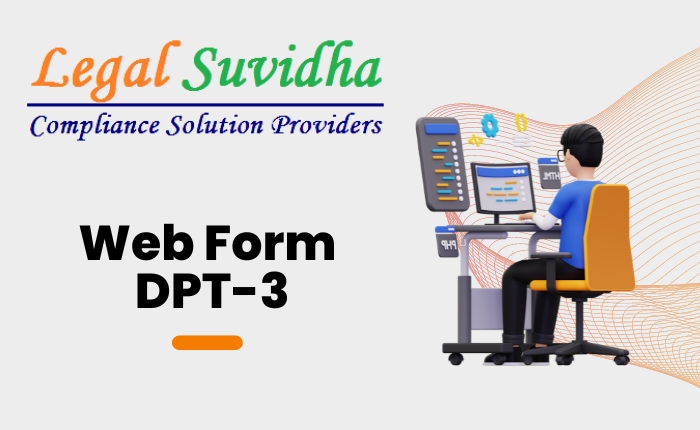The Ministry of Corporate Affairs (MCA) has recently made significant amendments to the Companies (Acceptance of Deposits) Rules, 2014, through a notification dated 29th August 2022. One of the key updates is the introduction of a new web-based form called DPT-3, which falls under section 73 of the Companies Act, 2013. This move by the MCA is aimed at promoting digitization reforms within the corporate sector.
The implementation of web-based forms has not only streamlined processes but has also expanded the range of information that stakeholders can provide through reporting. The objective behind this initiative is to establish a transparent and technology-driven mechanism within organizations, while simultaneously creating an easily accessible online database for efficient identification and verification of the information submitted by stakeholders.
By introducing the web-based form DPT-3, the MCA has taken a significant step toward enhancing the efficiency and effectiveness of corporate reporting. This digital transformation will not only simplify compliance procedures for companies but will also enable stakeholders to submit information seamlessly, reducing the burden of paperwork and physical documentation.
Changes in the Web Version’s Revised Format
The newly introduced web-based form will serve as a centralized platform where stakeholders can provide accurate and up-to-date information regarding their deposits. This platform will facilitate the smooth exchange of information between the MCA and companies, ensuring better monitoring and regulation of corporate transactions.
Here are the key points regarding the revised format of the web version:
1. Enhanced Disclosure of Exempted Deposits:
– Previously, only details of exempted deposits outstanding at the year-end were disclosed.
– The revised format now requires additional information, including:
– Opening balance
– Additions, repayments, and adjustments made during the year
– Closing balance
– Timeline disclosing the tenure since when the loan has been outstanding.
– These changes aim to promote greater transparency in reporting.
2. Changes in Particulars of Charge:
– Previous requirements:
– Date of entering a trust deed
– Name of the trustee
– Short particulars of the property securing depositors
– Value of the property
– Revised requirements:
– Number of Charges
– SRN of CHG-1/CHG-9 filed for creation of charge (if applicable)
– These modifications provide a more focused approach to charge-related disclosures.
3. Expanded Attachments:
– Previous attachment requirement: Auditor’s certificate (if applicable).
– Revised attachment requirements:
– Copy of trust deed
– List of depositors in Excel format
– The expanded attachments offer more comprehensive supporting documentation.
4. Specification of GNL Form SRN:
– The revised format allows for the specification of the SRN of the GNL form in which DPT-1 is filed.
– This provides a clear reference for tracking and referencing the filed forms.
5. Reporting Non-Deposit Outstanding Money or Loans:
– The revised format mandates the disclosure of total amounts of outstanding money or loans received by a company that is not considered as deposits under rule 2(1)(c) of the Companies (Acceptance of Deposits) Rules, 2014, as specified in rule 16(A)(3).
– This requirement ensures comprehensive reporting of all relevant financial information.
6. Compulsory Declaration by Statutory Auditor:
– In a significant change, a declaration by the statutory auditor has become mandatory in the revised format.
– This edition emphasizes the importance of auditor verification and enhances the credibility of the reported information.
Overall, these changes in the revised format aim to promote transparency, accuracy, and comprehensive reporting of deposit-related information, reinforcing the integrity of the financial reporting process.
If You have any queries then connect with us at [email protected] or [email protected] & contact us & stay updated with our latest blogs & articles


![Received an Income Tax Notice in India? Don’t Panic — Here’s Exactly What to Do [2025 Guide] 1 Income Tax Notice](https://legalsuvidha.com/wp-content/uploads/2025/12/Income-Tax-Notice.png)
![Cyber Crime FIR in India: How to File Complaint for Online Fraud, Banking Fraud & Digital Harassment [2025 Guide] 2 Cyber Crime Complaint](https://legalsuvidha.com/wp-content/uploads/2025/12/Cyber-Crime-Complaint.png)
![Trademark Infringement in India: How to File Legal Action & Protect Your Brand [2025 Guide] 3 Tradenark Infrigement](https://legalsuvidha.com/wp-content/uploads/2025/12/Tradenark-Infrigement.png)
![Property Title Verification in India: How to Check Clear Title in 7 Steps [Avoid Property Fraud – 2025 Guide] 4 Property Titles Verification](https://legalsuvidha.com/wp-content/uploads/2025/12/Property-Titles-Verification.png)



